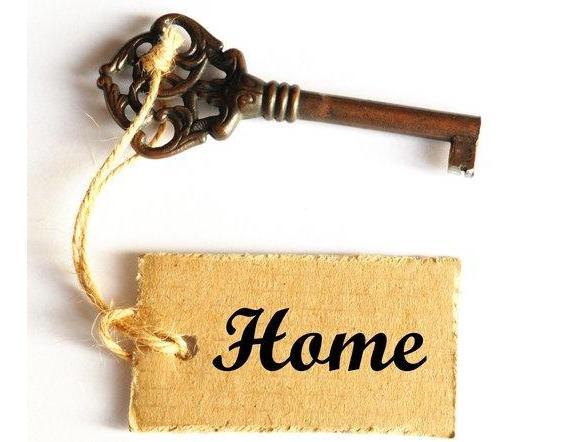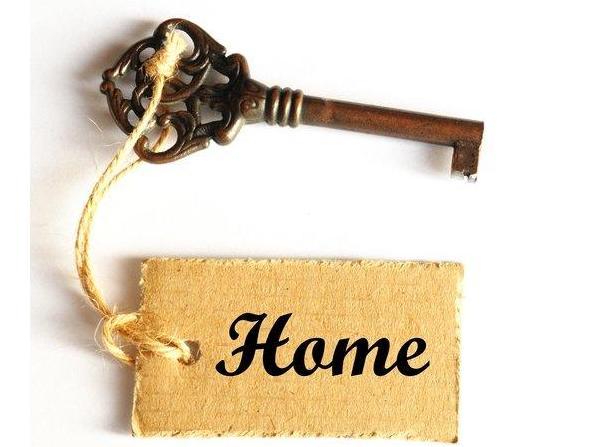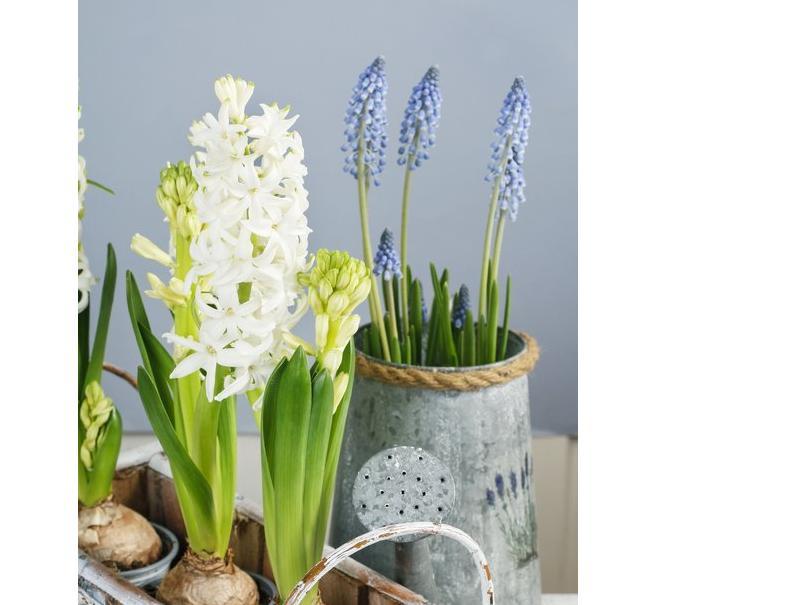New Page
Homemade Baileys Irish Cream
Christmas Cheer in a Cup!
Make a creamy, rich Irish cream liqueur in minutes with this easy homemade Baileys recipe. Enjoy it over ice, in coffee, or drizzled on desserts. Perfect for holiday gifting or entertaining!
Ingredients:
1 cup (235 ml) heavy cream or half & half
1 can (14 oz.-395 ml) sweetened condensed milk
3 tablespoons chocolate syrup
1 teaspoon instant coffee granules
1 teaspoon pure vanilla extract
1⅔ cup (400 ml) Irish whiskey I used
Instructions:
- Place the cream, sweetened condensed milk, instant coffee granules, chocolate syrup, and vanilla, and mix on low speed for 30 seconds.
- Then add the whiskey with the blender going at a very slow speed, and give it a whirl for a few more seconds.
- Transfer the Baileys Irish cream into sterilized glass bottles with tight-fitting lids and store in the refrigerator for up to 2 months.
- Shake well before use.


It's Christmas Cookie Season
Here's a simple and delicious recipe for Classic Sugar Cookies that's perfect for Christmas:
Ingredients:
2 3/4 cups all-purpose flour
1 tsp baking soda
1/2 tsp baking powder
1 cup unsalted butter, softened
1 1/2 cups granulated sugar
1 egg
1 tsp vanilla extract
1/2 tsp almond extract (optional, for extra flavor)
1/4 cup colored sugar or sprinkles (for decorating)
Instructions:
Preheat the oven to 350°F (175°C) and line two baking sheets with parchment paper.
Mix dry ingredients: In a bowl, whisk together the flour, baking soda, and baking powder. Set aside.
Cream butter and sugar: In a large mixing bowl, cream together the softened butter and granulated sugar until light and fluffy (about 2-3 minutes).
Add egg and extracts: Beat in the egg, vanilla extract, and almond extract (if using) until fully combined.
Combine wet and dry ingredients: Gradually add the dry ingredients to the butter mixture, mixing until just combined.
Roll dough into balls: Scoop tablespoon-sized amounts of dough and roll them into balls. Place them about 2 inches apart on the prepared baking sheets.
Flatten and decorate: Gently flatten each ball with the bottom of a glass or your fingers, and sprinkle with colored sugar or sprinkles for a festive touch.
Bake: Bake for 8-10 minutes or until the edges are lightly golden. The centers should still look soft.
Cool: Let the cookies cool on the baking sheets for a few minutes, then transfer them to a wire rack to cool completely.
Enjoy your sweet, festive sugar cookies! You can also add frosting or sprinkles if you want to get creative with the decorations.
Home Shopping by Generation:
How Preferences and Trends Differ Across Age Group
The process of buying a home is deeply personal, shaped by life stages, priorities, and cultural trends. From first-time buyers to retirees, generational differences play a significant role in shaping what people look for in a home and how they go about finding it. Let’s explore how home shopping varies by generation and what these preferences reveal about their unique perspectives.
1. Gen Z (Born 1997-2012): The Emerging Buyers
Though still a relatively small segment of the home-buying market, Gen Z is beginning to enter the scene as first-time buyers.
Priorities:
Affordability is key, with many relying on starter homes or condos.
Proximity to work, public transit, and social hubs is a high priority.
Tech-friendly features like smart home devices appeal to their digital-first mindset.
Search Habits:
Heavy reliance on online listings, apps, and social media to explore options.
Virtual tours and augmented reality tools are popular for evaluating properties remotely.
Challenges:
Rising home prices and student loan debt are significant barriers.
2. Millennials (Born 1981-1996): The Dominant Force in Home Buying
Millennials are the largest group of homebuyers today, accounting for over 40% of the market in recent years.
Priorities:
Open-concept layouts and energy-efficient homes.
Family-friendly neighborhoods with access to good schools.
Homes that require minimal renovation; turnkey properties are preferred.
Search Habits:
Strong preference for online platforms like Zillow, Redfin, and Realtor.com.
Reviews, local market data, and neighborhood insights are critical for decision-making.
Many use social media influencers or YouTube channels for advice.
Challenges:
Balancing affordability with their desire for quality and lifestyle-enhancing features.
3. Gen X (Born 1965-1980): The Move-Up Buyers
This generation often consists of established professionals and parents seeking their forever homes.
Priorities:
Larger homes with space for growing families.
Features like home offices, outdoor living spaces, and updated kitchens.
Proximity to good schools and amenities like parks and community centers.
Search Habits:
While tech-savvy, they may combine online research with traditional methods, like working closely with real estate agents.
Focus on long-term investment value and potential for appreciation.
Challenges:
Balancing the needs of growing children with caring for aging parents, which may influence location and layout choices.
4. Baby Boomers (Born 1946-1964): Downsizers and Retirees
Baby boomers are often in transition, either downsizing or searching for homes that support an active retirement.
Priorities:
Low-maintenance homes, such as condos or single-story layouts.
Proximity to healthcare, leisure activities, and grandchildren.
Many prioritize energy-efficient and eco-friendly features for cost savings and sustainability.
Search Habits:
Rely on real estate agents and traditional methods, though many use online platforms for preliminary searches.
Interested in communities offering social opportunities, like 55+ neighborhoods.
Challenges:
Selling larger homes in less competitive markets to fund their retirement homes.
5. The Silent Generation (Born 1928-1945): The Legacy Seekers
Though a smaller group, some in the Silent Generation are still active in the real estate market.
Priorities:
Accessibility features like ramps, wide doorways, and walk-in tubs.
Close proximity to family and healthcare services.
Preference for low-maintenance properties or assisted living communities.
Search Habits:
Depend heavily on family members or agents for assistance.
Minimal use of online tools, though they may explore listings shared by younger relatives.
Challenges:
Balancing independence with the need for a supportive living environment.
Key Trends Driving All Generations
While preferences vary, some universal trends impact buyers of all ages:
Technology: Virtual tours, drone footage, and detailed online listings are changing how everyone shops for homes.
Sustainability: Energy-efficient homes and green features appeal to buyers across the board.
Community: Whether it’s access to schools, workplaces, or leisure activities, location remains a critical factor for every generation.
Final Thoughts
Each generation brings its own priorities, challenges, and approaches to home shopping. Understanding these differences can help buyers, sellers, and agents navigate the market more effectively.
No matter your age or stage in life, finding the right home is a deeply personal journey—and knowing what matters most to you is the key to success.
Which generation do you belong to, and what are your top priorities when searching for a home? Share your experiences in the comments!


Paint Color Trends for 2025: What's In and What's Out
As we look ahead to 2025, the world of interior design is evolving, and with it, the paint color trends that will dominate homes, offices, and even commercial spaces. Color has the power to completely transform a room, set the mood, and influence how we feel in a space. So, if you're planning to refresh your home or dive into a new project in the coming year, it's essential to be aware of what's trending in the world of paint colors.
Here's a sneak peek into the top paint color trends for 2025 and how to use them in your next project.
1. Softer, Earthier Tones
In 2025, we’ll see an increased demand for paint colors inspired by nature—earthy tones that evoke calm, tranquility, and warmth. These shades are perfect for creating peaceful, welcoming spaces that help reduce stress and promote relaxation.
Warm Taupes & Beiges – Soft, neutral shades like taupe, warm sand, and muted beige are set to take over from the cooler grays of previous years. These hues work wonderfully in living rooms, bedrooms, and kitchens, offering flexibility while maintaining a cozy, organic feel.
Terracotta & Rust – Inspired by natural clay and the earthy hues of fall, terracotta and rust are making a strong comeback. These colors bring warmth and a sense of groundedness to any space and pair beautifully with natural materials like wood, stone, and metal.
How to Use:
These colors are incredibly versatile and can be used throughout your home, especially in spaces where you want to create a calm and inviting atmosphere. Consider pairing them with lots of plants and textured fabrics for added depth and interest.
2. Vibrant, Bold Accents
While earthy tones dominate the overall palette for 2025, we will also see a resurgence of bold, statement-making colors used as accents. Think rich, deep jewel tones that add drama and personality to any room.
Emerald Green – This lush, sophisticated hue has gained traction as a go-to color for accent walls, cabinetry, and even front doors. It evokes luxury, nature, and vitality.
Royal Blue & Sapphire – Classic and refined, royal blue is making waves for both modern and traditional interiors. It adds a bold splash of color to living rooms, dining areas, and even bathrooms.
Deep Plum & Burgundy – These rich, moody shades are perfect for creating intimate, inviting spaces with a touch of drama. They pair well with gold and brass accents for a high-end feel.
How to Use:
Incorporating these vibrant hues in smaller doses—such as through accent walls, furniture, throw pillows, or artwork—can add energy without overwhelming a space. They are especially effective in living rooms, bedrooms, and areas that need a pop of personality.
3. Pastel Revival with a Twist
Pastels are far from being "just for nurseries" in 2025. Soft, soothing pastel hues are making a strong comeback, but with a modern update. Look for pastels with a slightly muted, more complex undertone to keep things sophisticated and grown-up.
Pale Peach & Coral – These warm pastels have a retro vibe but feel fresh and contemporary when paired with other muted neutrals.
Dusty Lavender – More subtle and less sugary than traditional lavender, this shade brings a serene, almost nostalgic quality to bedrooms and living spaces.
Soft Mint & Sage Green – These pastel greens feel airy and fresh, making them ideal for spaces that require a calm, rejuvenating feel.
How to Use:
Pastels work well in bedrooms, bathrooms, and even kitchens. These colors are perfect for creating a gentle, serene environment. For a more sophisticated look, pair them with neutral accents like warm gray or light oak.
4. Tech-Inspired Metallics
As we continue to move into an increasingly high-tech world, it's no surprise that metallic paints are gaining popularity in 2025. Gold, silver, copper, and even holographic finishes will be seen more frequently as people look to inject some futuristic, dynamic flair into their interiors.
Copper & Rose Gold – These metallic tones are warmer alternatives to classic gold or silver, creating a more inviting and subtle luxe feel. They're ideal for highlighting architectural details like crown moldings, door frames, or built-in shelving.
Holographic & Iridescent Finishes – For the truly daring, iridescent and holographic finishes are set to become a statement in creative spaces like home offices, studios, or entertainment rooms. These finishes reflect light in interesting ways and can completely change the look of a room based on the time of day or lighting conditions.
How to Use:
These metallics work well as accent details—think trim, feature walls, or decorative elements like light fixtures and cabinetry. Be careful not to overdo it, as too much metallic can feel overwhelming. A little goes a long way to add depth, sophistication, and a touch of futuristic elegance.
5. Monochromatic Rooms with Deep, Moody Colors
Monochromatic color schemes are taking a dramatic turn for 2025, with deep, rich shades becoming the focal point of entire rooms. Think walls, furniture, and even ceilings in shades of navy, charcoal, or black. These bold monochromatic looks are ideal for those who love drama and want to create a striking statement.
Deep Navy & Charcoal – These deep tones provide a sophisticated and contemporary feel, perfect for living rooms and dining rooms. Navy, in particular, can feel both classic and modern.
Midnight Black – For the truly fearless, black is making a strong statement in 2025. Used in the right context (paired with proper lighting and accents), black can make a room feel cozy, intimate, and incredibly chic.
How to Use:
Monochromatic rooms work best when combined with varied textures and materials to prevent them from feeling flat. Think velvet cushions, wood flooring, and brass or gold fixtures to create balance and warmth. Accent lighting is also key to ensure the room doesn’t feel too dark or closed off.
6. Nature-Inspired Greens & Blues
With sustainability and environmental consciousness on the rise, it's no surprise that nature-inspired colors are continuing to gain popularity. From deep forest greens to vibrant ocean blues, these colors bring the outdoors in and make spaces feel refreshing and connected to the earth.
Forest Green – Deep, dark greens bring a sense of peace and grounding. They're perfect for creating a cozy, nature-inspired environment in living rooms, libraries, and even bathrooms.
Ocean Blues & Teals – Soft, watery blues and teals evoke a sense of calm and serenity, perfect for bedrooms, bathrooms, or anywhere you want to unwind.
How to Use:
Nature-inspired colors work beautifully in areas where you want to connect with the environment, such as sunrooms, bathrooms, or kitchens. Pair these tones with natural materials like wood, stone, and plants for a fully immersive experience.
Conclusion:
The paint color trends for 2025 show an exciting range of options that cater to both modern and timeless tastes. Whether you're drawn to the earthy, calming tones of nature, the bold drama of jewel-toned accents, or the soft sophistication of pastel shades, there’s something for every style and taste. As always, the key to choosing the perfect paint color is considering the mood you want to create and how the color will interact with your space’s lighting and other design elements.
Whatever colors you choose, 2025 is the year to embrace creativity, boldness, and a deep connection to nature—and your home will thank you for it.
Remembrance Day in Canada:
A Day to Reflect and Honor
Every year, on November 11, we take a moment to pause and reflect. Remembrance Day is a day when Canadians from all walks of life come together to honor the men and women who served in the military. Whether they fought in wars, participated in peacekeeping missions, or just served in other ways, it's a time to remember the sacrifices they made so we could live the lives we do today.
Remembrance Day has its roots in World War I. On November 11, 1918, at the 11th hour of the 11th day of the 11th month, the armistice was signed, officially ending the fighting. It was a huge moment, but one that came with a heavy cost—more than 61,000 Canadians lost their lives during the war. Many more came home wounded, both physically and emotionally, forever changed by the horrors of the battlefield.
The first Armistice Day ceremony was held in 1919, just one year after the end of the war. At that time, the day was all about remembering the soldiers who fought in World War I. Over time, though, it became a way to honor Canadians who served in all wars, including World War II, the Korean War, and more recent conflicts like Afghanistan. In 2011, the day was officially renamed Remembrance Day to reflect that broader meaning.
One of the most recognizable symbols of Remembrance Day in Canada is the red poppy. The story of how the poppy became a symbol goes all the way back to WWI. From the poem In Flanders Fields, written by Canadian Lieutenant Colonel John McCrae. The poem talks about how poppies grew among the graves of soldiers in Flanders, a region in Belgium where many Canadians fought and died.
In 1921, the Royal Canadian Legion adopted the poppy as a way for people to honor the fallen. Today, you’ll see Canadians of all ages wearing a poppy in the days leading up to November 11, as a simple but powerful act of remembrance.
On Remembrance Day itself, we often take a few moments to reflect. At 11:00 AM, there’s a two-minute moment of silence in schools. It’s a quiet time, but it speaks volumes. For those who attend ceremonies in person, there are wreath-laying events, military marches, and tributes at cenotaphs and memorials. It’s an opportunity to remember those who fought, whether they came back home or never returned.
Remembrance Day is also about understanding the bigger picture. Yes, we honor the military and their sacrifices, but it’s also about peace. It’s a time to reflect on how lucky we are to live in a country that values peace, democracy, and freedom. It's a day to think about how we can keep those values alive—not just by remembering the past, but by working for a better future.


What Gives a Homebuyer Negotiating Power?
In the world of real estate, negotiating power is crucial for homebuyers looking to secure the best possible deal. Whether it’s a lower price, favorable terms, or closing costs, a strong negotiating position can make a big difference. But what exactly gives a homebuyer negotiating power? This blog will explore the factors that can help homebuyers gain an advantage and how to use them effectively.
1. Understanding Market Conditions
Market conditions play a major role in determining a buyer’s negotiating power. In a buyer’s market, there are more homes available than there are buyers, meaning sellers may be more open to negotiating on price or other terms. This environment creates more opportunities for buyers to make offers below asking price, ask for concessions, or include contingencies.
On the other hand, in a seller’s market with limited inventory and high demand, buyers have less negotiating power. In this case, buyers may need to adjust their expectations and focus on finding other ways to strengthen their offer, like being flexible on closing dates or pre-approving their financing.
2. Being Pre-Approved for a Mortgage
A mortgage pre-approval shows that a buyer is financially qualified and ready to move forward with a purchase, giving sellers confidence in the buyer’s ability to close. Being pre-approved can give a buyer a stronger negotiating position because:
It demonstrates seriousness: Sellers prefer buyers who are financially ready, as it reduces the risk of the deal falling through.
It allows for faster closing: Pre-approved buyers can usually close faster, which is appealing to sellers who may be looking for a quick sale.
It can lead to better terms: Knowing they’re dealing with a prepared buyer, sellers might be more open to negotiating on price, repairs, or other contingencies.
3. Having a Larger Down Payment
A larger down payment is another factor that can increase a buyer’s negotiating power. Buyers who can put down more money are often seen as lower risk by sellers and lenders. Here’s how it can benefit the buyer:
More attractive to sellers: A larger down payment reduces the risk of financing issues, which reassures the seller that the buyer is less likely to back out due to financing problems.
Room for potential price negotiation: With a strong financial position, buyers may have the leverage to negotiate a better price or ask for concessions, such as repair credits or covering closing costs.
Flexibility with lenders: Higher down payments may also improve the buyer’s financing terms, which can benefit the buyer financially in the long run.
4. Flexibility on Closing Date
Being flexible with the closing date can be a powerful bargaining tool. If a seller needs more time to move out or is on a tight deadline, a buyer who can accommodate their schedule may be able to negotiate a lower price or additional concessions in return.
For example:
In a quick-sale scenario: If the seller needs to sell fast, offering a quick closing date can give the buyer an edge.
If the seller needs more time: Buyers who allow the seller to remain in the home for a period after closing can make their offer more appealing.
By understanding the seller’s timeline, buyers can tailor their offer to meet the seller’s needs, which may improve their negotiating position.
5. Knowledge of the Home’s History and Condition
Researching the property and its history can give buyers a strong edge in negotiations. If a home has been on the market for a long time or has gone through multiple price reductions, it may signal that the seller is more willing to negotiate. Similarly, buyers can use any known issues with the home as leverage.
Here’s how this knowledge can be advantageous:
Longer days on the market: Homes that sit on the market for extended periods may indicate a motivated seller who is open to negotiating.
Property condition: Noting any repairs, updates, or potential issues found during the inspection can give buyers a basis for negotiating a lower price or requesting repairs.
Comparable properties: Knowing what similar homes in the area are selling for can help buyers justify a lower offer if the home is overpriced relative to the market.
6. Making a Cash Offer
For buyers who have the means, a cash offer provides significant negotiating power. Cash offers are more attractive to sellers because they eliminate financing contingencies, which means fewer delays and reduced risk of the deal falling through. Sellers often prefer cash offers, even if they’re slightly lower than financed offers, for these reasons:
Quicker closing: Cash transactions generally close faster since there’s no waiting for loan approvals or appraisals.
Fewer contingencies: Without financing contingencies, cash offers tend to be cleaner, giving sellers peace of mind.
Willingness to negotiate: Because of the certainty cash brings, sellers might be more open to negotiating on price or terms.
7. Being Ready to Walk Away
Finally, the willingness to walk away from a deal is a subtle yet powerful form of leverage. Buyers who are firm in their budget or specific requirements can sometimes benefit from being prepared to leave the negotiating table if their needs aren’t met.
Shows resolve: Buyers who are prepared to walk away demonstrate to the seller that they’re serious about their requirements and won’t overpay.
Strengthens the buyer’s position: If the seller senses that the buyer has other options, they may be more willing to negotiate to secure the sale.
Avoids emotional decision-making: Walking away helps buyers avoid paying more than they’re comfortable with, which can be especially valuable in competitive markets.
Final Thoughts
Having negotiating power as a homebuyer is about more than just offering a higher price; it’s about positioning yourself as a serious, qualified, and flexible buyer who understands the market. By knowing the current market conditions, securing pre-approval, being flexible with terms, and remaining prepared to walk away, buyers can significantly increase their chances of landing a favorable deal.
In any negotiation, it’s essential to stay focused on your priorities and communicate openly with your agent. With the right approach, buyers can use these factors to strengthen their position and make the buying process as advantageous as possible.
The Impact of Seasonality on the Real Estate Market
Seasonality has a significant impact on the real estate market, influencing both buyer and seller behavior. Here are some key points to consider when discussing the impact of seasonality:
Demand and Inventory: The number of buyers and sellers in the market fluctuates throughout the year. Generally, the spring and summer months see increased activity, as families prefer to move during warmer weather and before the new school year begins. This results in higher demand and more inventory during these seasons.
Pricing: Seasonality can also affect home prices. During the peak season, when there is higher demand, sellers may be able to command higher prices for their properties. Conversely, during the off-peak season, sellers may need to adjust their prices to attract buyers.
Competition: The level of competition among buyers and sellers can vary based on the season. In a seller's market, when demand exceeds supply, buyers may face more competition and multiple offer situations. On the other hand, in a buyer's market, when there is an excess of inventory, sellers may need to be more competitive in pricing and marketing their properties.
Market Trends: Real estate market trends can vary throughout the year. For example, in areas with vacation or second-home markets, there may be a surge of buyers during the holiday season or summer months. Additionally, areas with strong university or college presence may experience increased rental demand during the start of the academic year.
Regional Differences: It's important to note that the impact of seasonality can differ based on the region. For example, in colder climates, the winter months may experience a slowdown in real estate activity due to weather conditions. Conversely, in warmer climates, the winter months may be considered the peak season.
Understanding the impact of seasonality on the real estate market can help both buyers and sellers make informed decisions. Real estate professionals should be aware of these patterns and adjust their strategies accordingly to maximize their success in any given season.


How to Determine Your Budget for Buying a Home:
A Step-by-Step Guide
Buying a home is an exciting milestone, but it can also be overwhelming—especially when it comes to figuring out your budget. Knowing how much you can afford ensures that you make a smart financial decision, one that aligns with your long-term goals. If you're ready to begin your homebuying journey but aren’t sure how to determine your budget, this guide will walk you through the key steps to establish a realistic price range.
1. Assess Your Financial Situation
Before diving into house listings, it’s important to take a close look at your current financial situation. This includes reviewing your income, expenses, savings, and debts. A clear understanding of where your money goes each month will help you figure out how much you can comfortably spend on a home.
Key things to review:
Monthly income: What is your total take-home pay (after taxes)?
Monthly expenses: How much do you spend on necessities like food, transportation, utilities, and discretionary spending?
Debt payments: Consider existing loans such as car payments, student loans, or credit card debt.
Having a clear picture of your financial situation allows you to determine how much of your income can be allocated to housing costs without straining your budget.
2. Understand the 28/36 Rule
One of the most widely used guidelines for home affordability is the 28/36 rule, which helps keep your debt and housing costs manageable. The rule suggests:
You should spend no more than 28% of your gross monthly income on housing costs (including mortgage payments, property taxes, and insurance).
You should spend no more than 36% of your gross monthly income on total debt, which includes housing costs plus any other debts (such as car loans, student loans, or credit cards).
For example, if your gross monthly income is $5,000, you should aim to spend no more than $1,400 on housing ($5,000 x 28%). Keeping within these limits ensures you won’t be overstretched financially.
3. Determine How Much You Have for a Down Payment
Your down payment is a critical factor in determining your homebuying budget. The more you can put down upfront, the smaller your mortgage will be, and the lower your monthly payments will be. Traditional down payments are often around 20% of the home’s purchase price, but some loan programs allow for lower down payments, sometimes as low as 3% or 5%.
For instance, if you’re aiming to buy a $300,000 home and have saved $60,000 for a down payment, that’s 20%. However, if you only have $15,000 saved, that’s a 5% down payment.
Tip: Keep in mind that a larger down payment can help you avoid private mortgage insurance (PMI) and potentially secure a lower interest rate on your loan.
4. Factor in Additional Costs
Many homebuyers focus solely on the mortgage payment, but there are several other costs to consider. Understanding the full picture of homeownership expenses is essential for determining how much you can afford.
Additional costs to budget for:
Property taxes: Vary by location, so research rates in your desired area.
Homeowners insurance: Protects your home from damage and is typically required by lenders.
HOA fees: If you’re buying in a community with a homeowners association.
Maintenance and repairs: Homes require ongoing upkeep, so budget for unexpected repairs and routine maintenance.
Closing costs: These include fees for appraisal, title insurance, and legal services, often amounting to 2%-5% of the home’s purchase price.
By accounting for these extra expenses, you’ll avoid any surprises after closing and be better prepared for the total cost of homeownership.
5. Get Pre-Approved for a Mortgage
Once you have a good idea of your financial situation and homebuying budget, the next step is to get pre-approved for a mortgage. A pre-approval is an official estimate from a lender of how much you can borrow based on your income, credit score, and financial history. While this doesn’t guarantee you’ll be approved for that exact amount, it gives you a concrete starting point.
Having a pre-approval letter in hand can also strengthen your offer when you’re ready to buy, as it shows sellers that you’re a serious and qualified buyer.
6. Consider Future Financial Goals
When determining your homebuying budget, it’s essential to consider not just your current financial situation, but also your future goals. Are you planning to start a family, buy a new car, or save for retirement? Ensure that the home you buy leaves room in your budget for these goals.
Avoid the temptation to max out your budget, as homeownership comes with its own set of financial responsibilities. Leaving some breathing room in your finances will allow you to enjoy your new home without feeling financially overwhelmed.
Conclusion
Determining your homebuying budget is a crucial first step in the homeownership process. By thoroughly assessing your financial situation, understanding key guidelines like the 28/36 rule, and factoring in additional costs, you’ll be able to set a realistic budget that aligns with your long-term goals. Getting pre-approved for a mortgage and considering future expenses will further ensure you make a wise investment.
Buying a home is a significant financial commitment, but with careful planning and budgeting, you’ll be able to find a home that fits your needs and lifestyle comfortably.
With these steps, you'll be better equipped to make an informed decision and confidently start your search for the perfect home!
Gratitude Practice
Fresh off Canadian Thanksgiving it is a little easier to think in terms of gratitude and thankfulness. Fall is a great way to begin a new practice as we shift into the coming holiday season.
1. Commit.
Gratitude is a way of looking at your life that gains momentum over time and gets stronger with practice. Its true, gratitude doesn’t seem to come as easily as grumbling does, and you will likely resist this exercise from time to time, but trust me, just commit to it. Even when you can hardly summon up the energy to shift into gratitude it still has magnetizing power.
2. Begin.
Sit down with pen and paper or at your computer and start with “I am grateful for …” Maybe you will have to stop there for a minute and wait because you just can’t think of anything. But if you wait, surrendering to the moment, something inside you will shift. The words will come.
The power of gratitude that you are tapping into is bigger than you and it is bigger than your problem, no matter how big that is.
3. Write it down.
There is just something about the energy of writing things down that sets it apart from merely think about what you are grateful for. Its as if it pulls that gratitude into your physical world by training your attention to it in a solid way.
4. Feel it.
Some days you will write without feeling a shred of gratitude. That’s okay. Just do it anyway. BUT when you can feel those feelings of gratitude in your heart, allow them to be present in your body. If you can embody the 'why' of your gratitude with a feeling it will help you on the days you are less connected to your gratitude.
5. Choose a set time of day.
You may want to do this when you first wake in the morning or late at night before you go to sleep. The 'when' isn't so much important as your dedication. Consistency is the key.
6. Practice present-moment gratitude.
As you move through your day, when you remember, think about what you are grateful for in the moment. Moving through your day with awareness and grace will mean that when you do sit down to write your gratitude list those things will come to mind.
7. Share the gratitude.
Partner with someone so you stay at it.Not only will you keep each other going, but that sense of obligation to the other person will give you the push you need to write your list on the days when it feels too hard.
8. Don’t stop once you start to see results!
When you first began to see results, don't take a break from gratitude for a while, keep the momentum. Gratitude builds on itself. The more you notice, the more you will have to be grateful for.
9. Allow yourself to be human.
Grumble if you must. Miss the odd day here and there. Write “I am grateful I am writing my gratitude list” five times if you can think of nothing else. If you miss a day, don't beat yourself up, just get back to it and keep riding!
Seeing life is a positive way awaits you!


Fall Clean Up Time!
Home maintenance is essential, both to keep your house looking its best and to prevent problems that could worsen over time. One of the best times to clean up and maintain your home is during the fall, the weather is cooler but winter freeze is still a little way off so it makes working outside enjoyable! Fall cleaning can be a big job, there are many things to think about, so here are a few ideas to get you started.
Take Care of Your Flower Beds Don't let leaves and other plant material build up over flower beds in the fall, leaving the hard work for the spring. If you tackle some of the work in the fall (staying on top of spent flowers, plants and shrubs) the clean-up later will be easier; leaving you more time to enjoy the coming spring! Make sure to spread fallen leaves, compost and any other material that will break down over the winter onto your garden soil. Turning over the garden and breaking up the soil will drive that compostable material into the ground, giving your garden extra nutrients.
Plant Bulbs, Shrubs, and Fall Annuals
Some plants do best when planted in the fall. If you want to add new shrubs or spring bulbs fall is for planting! Fall annuals like pansies and mums are also a great addition to keep some color in your yard as other plants begin to go dormant.
Unhook Your Garden Hose
Fall is the time to store hoses, unhooking them before cold temperatures set in. Before you do that, though why not give them a workout! Give your house a good wash, clean out the gutters, and removing as much dirt and other debris from the siding and drains as possible. Once you’re done, unhook the hoses and allow them to dry thoroughly before storing them for winter.
Clean up the vegetable garden
After the final harvest, pull out old vegetable plants and remove debris. If you compost, now is the time to add a layer of compost to help nurture your soil for planting next spring.
Take Care of Your Lawn
In the days leading up to the first major frost or freeze, cut your grass to about an inch in height. Make sure to rake, aerate and fertilize to ensure your lawn is healthy and ready for the spring seasons.
Your Deck Needs Care Too
Decks and the garden furniture you have on them will need a good cleaning and, if appropriate, the may need staining too. Don’t forget to properly store cushions and outdoor cloths so that they can be used again next season!
For many of us, autumn means cool nights, warm drinks and visits to the local pumpkin patch. It also means it’s time to get your yard ready for winter. The right preparation now will save you time and energy when spring rolls around. A little effort now and you'll be ready to enjoy you yards into a whole new season!
Can't Find a Home? Try This
Finding a home in can sometimes be challenging: Supply can be limited, or you can find find yourself up against dozens of buyers, making it hard to snag the home — and at a price you can afford. It’s important not to lose hope, though. Despite the competitive market, there are ways to find (and buy) your dream home.
Are you having trouble with your home search? These tips might help:
Get pre-approved for your mortgage. Having pre-approval is critical in a highly active housing market. It could give you a leg up over other buyers, and it can help you gauge your budget more accurately.
Expand your search area. Branching out a little often helps open up more inventory — and it may reduce your competition. If your lifestyle allows for it, you might even want to try looking in more rural areas.
Change your ideal property type. Rather than only focusing on single-family homes, what about searching for townhouses, condos and duplexes too? If you choose the latter, you might be able to rent out the other half to help cover your mortgage.
Shop under your budget. Looking for properties well under your maximum budget allows you to bid comfortably above list price and beat out other buyers — without risking your financial standing.
Look into building or renovating. Maybe you’d like a new construction home instead of buying an existing house. Or you can look to fixer-uppers and plan to renovate the home before moving. Just make sure you talk to your lender about loan options, as your choice may change what type of mortgage you need.
Do you need help on your home search? Get in touch today.


Nowhere to Park?
3 Solutions for You
Create your own driveway with one of these affordable methods. A DIY driveway can be an easy want to add parking or improve the look of your home. Here are three relatively simple options.
1. Carve out a parking pad
The easiest, most affordable way to get an extra parking space is to clear out some grass and throw down mulch. It works fine, looks good and can be done in a day. But beware: Mulch isn’t a permanent solution. Mulch breaks down over time, floats away in a heavy rain and fades in the sun. Over time, you may end up spending more money sprucing up the mulch than you would have pouring concrete in the first place. Be sure to use a store-bought landscape barrier, or even lay down newspaper to prevent weeds. If mulch seems too temporary, consider other loose materials like gravel, stones, or crushed limestone.
2. Build a DIY driveway with interlock
A more solid parking option is a concrete or brick interlock driveway. It can be installed either professionally or DIY. Thousands of videos online show the steps and all the tricks of the trade. It’s really quite simple:
Excavate the area to be paved.
Install a base material, such as crushed limestone, at a thickness of a few inches.
Pack down the base material with a compactor, making sure to slope it as desired.
Install a thin layer of sand on top of the base material.
Install paver blocks on the sand layer, laying them in place in the pattern of your choice.
Install a border row of bricks along the edges, and back that row with a poured concrete edge restraint, which will keep things from moving outward.
Put another layer of sand on top of the finished surface and broom it into the joints between the bricks.
When installed properly, a paver driveway can last for decades.
3. Go with classic concrete
Finally, there is the tried-and-true concrete driveway. There’s a reason concrete is still the most common driveway product in the world: It looks good, doesn’t cost a fortune, and lasts a very long time. There are fewer steps to pouring a concrete parking area than there is to installing pavers, but it’s not quite as beginner friendly. If you’ve never poured concrete before, it’s a good idea to start with a smaller area, such as a sidewalk, before tackling a large area.

Should You Go to an Open House if You're Not Ready to Buy?
With all of the listing sites available, browsing homes online can become addictive. Even if you’re not in the market to buy or sell a home, you may find yourself scanning the internet for homes that you do not intend to buy or are completely out of your price range. Not only does this help past the time, but it’s also an exhilarating pastime.
Instead of just perusing the web for a home, why not visit them? If you think you need a realtor to go to an open house or you have to be in the market to buy a home to attend, think again. Attending an open house can be a beneficial endeavor for your future home buying experience. So before you discount the idea, here are a few things to consider.
Is it okay to attend an open house without a realtor?
The first thing that may deter you from going to an open house is that you think you need to go with an agent. While many buyer’s agents recommend booking with them ahead of time to visit a home, realtors are used to prospective buyers stopping by open houses all the time. An open house allows prospective buyers to see what’s available without any pressure to buy. So, if you’re not ready to partner with an agent, it’s completely okay to attend open houses alone.
Discover what you can afford
The homes you’re attracted to and what homes you can afford might be two completely different things. Often, first-time homebuyers don’t get a good idea of what they can afford until they are deep into the home-buying process. They might be searching for something that doesn’t even exist. Therefore, the sooner you can understand what type of homes are available within your price range, the better chance you have of successfully finding a home that matches your expectations and budget.
Visiting open houses can help you discover what you can and cannot afford. While you can type in a price range online, the photos and experience of visiting the home might be quite different from the listing. Getting up close and personal with homes that may interest you will give you a better idea of what to expect when you start the home-buying process. This way, you won’t be disappointed and discouraged when you start looking for your perfect home.
Check out the competition
The number of guests attending an open house can indicate how fast you need to make an offer when you find a home you’re interested in. It can also tell you how you need to price your home to have it sell quickly. While some housing markets can allow a few days to make a decision, others may only give you a few hours to submit your offer. If you pay close attention to the other buyers at the open house, you may gather some intel about what type of home buyer the seller is looking for. Even though this may not matter now since you don’t intend to purchase the home, it may help you later when you’re ready to submit an offer. The more information you can gather, the better you’ll be able to navigate your home-buying process.
See realtors in action
Even if you don’t identify the home of your dreams, you might be able to connect with a realtor who can help you find your dream home. Visiting open houses gives you the perfect opportunity to interview candidates, without them even knowing you are looking for an agent. This gives you the ability to see how different realtors represent their clients and if they might be suitable for your needs. Be aware of how the realtor interacts with you upon your arrival. Do they greet you, or are they too busy to give you the time of day? You should also come with insightful questions about the market to determine how knowledge the agent is.
Observe home design trends
Generally, sellers try to make a great first impression when hosting an open house. Some sellers may even make some updates or hire a staging company before they list their home. Sellers tend to rely on the guidance of their realtor or the design trends happening within the market. Therefore, when you attend an open house, you can get an idea of what home designs you’ll see. It will give you an idea of what you’re attracted to and things you may look for when buying a home. Also, it may give you some inspiration for updates to your current home that will make it feel like new.
Get familiar with neighborhoods that interest you
Buying a home is about more than the property itself. It’s important to find a home and community that suits your lifestyle. For example, if you want to start a family, you may want to buy a home in a good school district with parks close by. Therefore, this is the perfect time to start learning about nearby communities that could be a match for your needs. You can begin by observing the residents and vibe of the communities you’re interested in a few months before you start the home buying process.
Learn more about your needs
Often, it’s challenging to know what you truly want in a property before you start searching for a home. For instance, how many bedrooms do you want? Are you okay with a first-floor master? What amenities are you looking for? Viewing other homes will give you an idea of different layouts and amenities that interest you.
The bottom line, sure, you may feel nosey or that you’re intruding with out the intention of buying. However, regardless of whether you’re buying or selling a home, you should visit a few open houses. You don’t need to bring a realtor. Just hop in your car or take a walk down the street to get a better idea of what you can afford and what homes make sense for your lifestyle.
House Warming Tips
In the process of moving into a new home? Well, don’t forget to christen your new space with a housewarming party! We know, we know, the last thing you may feel like doing when you’re in the middle of unpacking boxes and setting up your new home is entertaining. But you may be pleasantly surprised by how it feels to take a minute, welcome a few friends, meet a few neighbors, and gaze at your new purchase.
And, trust us, when you throw a housewarming party, your friends and neighbors are not expecting your new home to look perfect, but you can bet they are excited to get a first look at your new space! Need some motivation to get your boxes put away and at least a bit of décor up on your walls? Here are five tips for throwing an awesome housewarming party:
1. Get Planning
Decide on a date and time for your party. Once you set the date, determine your guest list and send out your invites. Use regular mail, email, or social media to get the word out. Remember, it is customary for guests to bring a gift to a housewarming party, so if you prefer that your guests just come to have fun, be sure to indicate that in your invite.
2. Choose a Theme
Here is where you can have a little fun before your party even starts. When it comes to housewarming parties, you can host anything from a casual backyard BBQ to a fancy dinner to an unpacking party—yes, you could put your guests to work when they come to the party!
3. Include a Tour
Just as guests pretty much plan to bring a gift to a housewarming party, they also plan on receiving a tour while they’re there. Of course, you can keep it traditional and simply parade guests through your home to show off the new space. But you also have a unique opportunity to add to the fun of your event. Offer up a non-traditional tour by creating a scavenger hunt through your new home. Deciding between a few colors in certain rooms? Let guests weigh in while they’re on tour!
4. Let Guests Help
In addition to asking guests to weigh in on paint colors or décor while they’re in your new home, you also can rely on them to help with the night’s menu. Plan to provide the main course, but let guests bring their favorites when it comes to appetizers, desserts, or drinks. This is a great way to beef up your recipe collection or stock your bar, too!
5. Invite Guests Back
The best way to end an awesome housewarming party? Don’t let the memory-making stop. You can ensure your new home is always full of fun and friends by giving your guests a way to remember how to find you. Send your housewarming party guests home with a memento that includes your new address. Anything from personalized post-its to custom-wrapped candy bars can include your address. Get creative when thinking about how to send your guests home after your party.
6. Don’t stress yourself.
A final tip for hosting a great housewarming party? Don’t stress. House cleaning and care are all a part of being a homeowner. If those tasks don’t get perfectly done before your party, it is OK. Remember, your guests are interested in seeing your home, but above all, they’re there to support you in your new venture!


Finished Basements: Do They Add Value?
Whether you are an owner looking to invest in your property or a real estate professional working to help a seller, the topic of basement remodeling is sure to come up. Before beginning any project, it is important to understand what you want to get out of the remodel, what is possible on your budget and whether you will receive a return on your investment when you decide to sell your home. Achieving a return on investment can sometimes be difficult. The following are three key considerations for you to keep in mind.
Moisture
If you are taking a basement from unfinished to finished, you will have to take moisture into account. Any leaks, condensation or flooding will have to be dealt with before you start remodeling. This can be a large factor in your rate of return, because the cost to fix these issues can run into the thousands of dollars. If you neglect to deal with these issues first, however, you will pay far more in mold removal, ruined carpets and musty smells.
Labor costs
If you plan on hiring contractors, keep in mind that labor is typically the largest part of the cost. A rule of thumb is that materials are about one-third of the cost to the owner and labor accounts for the other two-thirds. This means that handy homeowners can save significant money by doing part of the remodeling job by themselves. Keep in mind that attempting to do a job that you are not qualified for may end up causing damage or simply look shoddy, which can ultimately mean more expense to pay someone to undo your mistakes. Plumbing and electrical work should always be left to professionals, but installing insulation, hanging drywall, painting and even installing carpet may be within reach.
Egress
Often, for a basement room to be considered a bedroom, building codes will require that a basement have a window large enough for occupants to safely escape in the event of a fire, and for a firefighter to enter wearing full gear. This is important, because adding an exit to your basement's foundation can be expensive if there isn't one present already.
Remodeling a basement can be fun, but to get the best return on your investment, it may take some elbow grease. For those homeowners willing to take the time to do the job inexpensively and effectively, however, there can be a significant payoff.
Keeping Your Home Safe While You Travel
Keeping your home safe while you're on vacation is essential to ensure peace of mind and protect your property from potential threats. One of the first steps is to make your home appear occupied. This can be achieved by setting timers on lights, TVs, and radios to create the illusion that someone is home. Asking a trusted neighbor or friend to collect mail, newspapers, and packages can also prevent the buildup of items that signal an empty house to potential burglars. Additionally, consider installing motion-activated exterior lights and a home security system if you haven't already, as these measures can deter intruders and provide monitoring while you're away.
Another crucial aspect of home safety during vacations is securing doors and windows properly. Ensure all entry points are locked, including garage doors and any sheds or outbuildings. Reinforcing locks with deadbolts and security bars can add an extra layer of protection. It's also wise to avoid sharing your vacation plans on social media until after you return, as broadcasting your absence can make your home a target. Finally, alert your home security company and trusted contacts about your travel dates and emergency contact information, so they can promptly respond to any alerts or issues that may arise. By taking these precautions, you can enjoy your vacation with peace of mind knowing that your home is secure.


Your Home Maintenance List for Summer
Summer is a great time to tackle home maintenance tasks that ensure your property remains in top shape throughout the season. Here's a comprehensive checklist to help you stay on top of essential summer home maintenance:
1. **Inspect and service your HVAC system:** Schedule a professional to inspect and service your air conditioning system to ensure it's running efficiently during the hot months. Clean or replace air filters regularly to maintain good indoor air quality.
2. **Check and clean gutters and downspouts:** Clear out debris such as leaves, twigs, and dirt from gutters and downspouts to prevent clogs and water damage. Ensure downspouts direct water away from the foundation.
3. **Inspect and repair exterior paint and siding:** Check for any signs of peeling paint, cracks, or damage to your home's exterior siding. Repair and repaint as needed to protect against moisture and weather damage.
4. **Inspect and clean outdoor decks and patios:** Inspect decks and patios for signs of wear, rot, or loose boards. Clean surfaces thoroughly and apply a fresh coat of sealant or stain if necessary to protect against moisture and UV damage.
5. **Trim landscaping and trees:** Trim bushes, shrubs, and trees away from your home to prevent them from touching the siding or roof, which can lead to damage and pests. Prune overgrown branches that could pose a risk during summer storms.
6. **Check and clean outdoor vents and exhausts:** Clean out dryer vents, bathroom exhaust vents, and kitchen exhaust fans to remove lint, dust, and debris. Ensure vents are functioning properly to improve airflow and reduce fire hazards.
7. **Inspect and clean windows and screens:** Clean windows inside and out to maximize natural light and visibility. Inspect window screens for tears or damage and repair or replace as needed to keep insects out.
8. **Test and clean outdoor lighting:** Test outdoor lights and replace bulbs as necessary. Clean fixtures and lenses to ensure proper illumination for safety and security around your home.
9. **Inspect and maintain irrigation systems:** Check sprinkler heads for proper functioning and adjust watering schedules as needed to conserve water during hot weather. Inspect hoses and outdoor faucets for leaks or damage.
10. **Check and repair driveway and walkways:** Inspect driveways and walkways for cracks or uneven surfaces. Repair cracks and seal asphalt or concrete surfaces to prevent further deterioration from summer heat and weather.
By following this summer home maintenance checklist, you can ensure that your home remains comfortable, efficient, and safe throughout the season. Regular maintenance not only enhances curb appeal but also helps prevent costly repairs down the road.
Selling in the Summer
Selling your home in the summer can be both exciting and challenging. As the temperatures rise and the days get longer, the real estate market often heats up along with the weather. One of the biggest advantages of selling in the summer is the curb appeal. With gardens in full bloom, lawns lush and green, and natural light flooding through windows, your home can showcase its best features effortlessly. Buyers are often more willing to attend open houses and take their time exploring properties during the warmer months, making it a prime time to attract serious interest.
However, selling in the summer also comes with its own set of considerations. With many families on vacation or enjoying outdoor activities, the pool of potential buyers might fluctuate. It's essential to strategize your listing timing and marketing efforts to capture the attention of those actively looking. Pricing competitively and ensuring your home is in top condition are crucial steps to stand out in a potentially crowded market. Working with a knowledgeable real estate agent who understands the nuances of the summer market can also greatly enhance your chances of a successful sale.
Ultimately, selling your home in the summer can be a rewarding experience with the right approach. Whether you're downsizing, upgrading, or relocating for a new job opportunity, the summer months offer a vibrant backdrop for showcasing your property's unique charm. By leveraging the season's natural advantages and preparing thoughtfully, you can maximize your chances of securing a buyer who appreciates all your home has to offer.


MAKE YOUR HOME A BUG-FREE ZONE
As we navigate our way through this summer, many of us are likely spending more of this season at our homes than usual. While relaxing outdoors can be a great way to spend your time, you might find that you are running into bug issues. Unfortunately, nice weather usually means an increase in pesky bug activities. Here are 5 simple ways to make sure you can enjoy your space outside and make your home a bug-free zone.
Get rid of any standing water.
Make sure you clean out gutters and downspouts regularly. While you may be aware that stagnant water attracts bugs, you may not realize those gutters can trap water and become a mosquito breeding ground. You should keep kiddie pools and watering cans empty when not in use.
Add plants that bugs hate.
Mint and citrus plants are your best bet to battling bugs you may not want around. Here are some pest-repelling plants and the bugs that hate them: Some of the best additions to your garden to keep bugs out are: basil, catnip, citronella, lemon thyme, lavender, marigold, rosemary.
Keep a tidy yard.
Bugs, especially ticks, love to hide in tall grass. Make sure you are mowing your lawn regularly and making sure plants aren’t crowding your home or giving bugs easy access inside.
Don’t mulch too much (or too close)!
Mulch generates heat as it decomposes, so it gives cockroaches and ants an ideal environment to nest and end up inside your home. Try to keep mulch areas a foot or so from your home’s foundation or consider inorganic mulch options.
Install patio fans.
An easy way to get rid of mosquitos is to add a patio fan to your outdoor space. Their bites are a pain, but they don’t put up much of a defense when they are pushed away by outdoor fans.
Heat Wave Hacks to Keep You Cool
Top tips to keep cool in hot weather
Heatwaves are happening around the world. And climate change means they're getting hotter and longer. Here's how to stay cool in the heat.
1. Be sun smart
It's best to avoid going out during the hottest hours of the day, but sometimes that can't be avoided. When out in direct sunlight remember:
- Wear (and regularly reapply) sunscreen.
- Cover your head with a hat.
- Take regular breaks indoors or in a shady area to avoid getting heat exhaustion or heatstroke.
- Wearing light-coloured, loose-fitting clothing will also help you to stay cool.
2. Wetter is better
Heat escapes through the skin, which is the largest organ in the body. So, the more skin you can cool down, the better.
There are various methods for how to cool your skin down in baking hot weather:
- Drenching a t-shirt and keeping it wet can be very effective.
- Buy cooling spray.
- Having a cool shower - not freezing as you should cool down slowly.
- You can quickly cool yourself down by putting your hands and feet in cold water. Wrists and ankles have lots of pulse points where blood vessels are close to the skin, so you will cool down more quickly
In hot weather, it's important to avoid caffeine and make sure you're drinking lots of water. If possible, drink isotonic sports drinks to replenish the lost salts, sugars, and fluids.
Both cool and hot drinks will work to keep your core temperature at the same temperature. Consuming hot drinks will not cool you down more effectively than cold drinks. In the heat, you should avoid drinks containing caffeine, including tea and coffee, it's typically best to stick to water.
As you sweat throughout the day, the liquids you are losing need to be replaced to avoid dehydration.
Symptoms of dehydration include:
- a dry mouth
- dizziness or confusion
- headaches
4. Limit your alcohol
The sun is high, and so are many people's spirits. And that can lead us to the patios for a cold drink.
Unfortunately, mixing too much sun with a few too many drinks is not a good combination.
Alcohol causes dehydration, which can hit especially hard if your body is already struggling to stay cool in the summer. Drinking alcohol can also make it harder to get a good night's sleep, something that's already difficult in warmer temperatures.
While you may fall asleep quickly, you're likely to have poor-quality sleep and wake up earlier than usual - not exactly the refreshing sleep you'll need.
5. Eat light meals to feel cooler
When it's hot, you are far better off sticking to light, well-balanced, regular meals. Food with a high water content like strawberries, cucumber, celery, and lettuce, will also help to keep you hydrated and cool in summer weather.
You can also try foods with high fluid content like soups and stews that contribute towards hydration levels.
6. Limit physical activity to cooler parts of the day
It's important not to disrupt your routine too much because of hot weather, but sometimes you may have to. An early morning run may feel punishing when you're nice and sleepy in bed, but it could be dangerous to exercise in the blazing midday sun and risk dehydration, heat exhaustion, or heatstroke.
Take the temperature into consideration when planning your day and, if you can, limit physical activity to when it's cooler. If you do decide to workout or play sport, make sure to drink lots of water and take more breaks than usual to make sure you're not putting any extra stress on your body.
You should also make sure you take a cold shower after exercising to cool down and follow our other advice for staying cool throughout the day.
7. Keep your home cool
During the hot weather, it’s important to make your home a place you can escape to out of the heat, so keeping it cool is key to feeling comfortable. When temperatures reach heatwave levels this can be more challenging than you may realise and it's not as easy as just opening a window. During the day draw the blinds to ensure extra heat does not get trapped in your home.
Keeping your house cool is especially important at night. During a heatwave temperatures often stay high even at night making it difficult to get a good night's sleep.


10 Favorite Dad Jokes in Honor of Father's Day
However you choose to celebrate the fathers and father figures in your life, here are 10 Dad Jokes to make you chuckle.
- What kind of shoes do frogs wear? Open toad.
- Did you hear about the red and blue ships that collided? All the sailors were marooned.
- My neighbor gave me a new roof for free. He said it was on the house.
- Did you hear about the teenager who failed his driving test? He thought it was a crash course.
- Where do surfers learn to surf? At boarding school.
- A duck walks into a bar and buys everyone a round. He tells the bartender, “Put it on my bill.”
- Where do fish keep their money? In a river bank.
- How did Vikings communicate with one another? By Norse code.
- Why did Marie Curie stop dating that guy? There was no chemistry.
- Did you hear about the nurse who didn’t want to become a doctor? She didn’t have the patients.
Sellers: Don't Let These Two Things Hold You Back
When it comes to selling a home, it's natural to have some concerns or hesitations. However, it's crucial not to let these things hold you back from taking advantage of a potentially profitable opportunity. In this blog post, we'll discuss two common concerns for sellers and provide insights on how to overcome them.
Fear of Market Conditions: One common concern for sellers is the fear of market conditions. You might worry that it's not the right time to sell, or you might be uncertain about the demand for your particular property. While market conditions do play a role, it's important to remember that there are always buyers in the market, regardless of the overall conditions. Instead of focusing on the broader market, consult with a real estate professional who can provide insights into the local market conditions and guide you on the best strategy for selling your home.
Emotional Attachment to the Home: Another obstacle for sellers is the emotional attachment to their home. It's natural to have sentimental value attached to the place where you've created memories and built a life. However, it's essential to separate emotions from the selling process. Remember that selling a home is a business transaction, and your goal is to achieve the best possible outcome. To overcome this hurdle, focus on the future and the opportunities that await you in your next chapter. Keep in mind that by selling your home, you're opening doors to new experiences and possibilities.
Tips to Overcome These Concerns:
Educate Yourself: Research the local market conditions, recent sales in your area, and consult with a real estate agent who can provide you with accurate information and data-driven insights.
Set Realistic Expectations: Understand that the real estate market fluctuates, and the selling process can take time. Set realistic expectations in terms of pricing, timeline, and the overall selling experience.
Work with a Professional: Hire a reputable real estate agent who has experience in your local market. They can provide guidance, market your home effectively, negotiate on your behalf, and help you navigate any obstacles that may arise.
Depersonalize and Stage: To overcome emotional attachment, consider depersonalizing your home by removing personal items and photographs. Additionally, stage your home to showcase its potential and appeal to a wide range of buyers.
Bottom Line
Don't let fear of market conditions or emotional attachment hold you back from selling your home. By understanding the local market, setting realistic expectations, working with a professional, and depersonalizing your space, you can overcome these concerns and take advantage of the opportunities that selling your home can bring. Remember, selling a home is a strategic decision that can lead to new beginnings and exciting possibilities.
Remember to customize the content to fit your target audience and add any additional information or local insights that may be relevant.

7 ways to get your offer accepted
Are you in the market to buy a home? Then you're in the right place here.
Finding your dream home isn't always a walk in the park. Once you find it, you want to be sure your offer is persuasive for the Seller to accept.
When it's a seller's market, there can be multiple offers for each property. Make yours stand out the most by doing these 8 things.
1) Present a clear written offer. Be specific on the price and terms and don't leave any blank areas on the contract.
2) Offer a competitive purchase price. Give the Seller what they want + more.
3) Put forth a substantial amount of earnest money (escrow) deposit. This will show the Seller you're a serious Buyer because you're willing to put more "skin in the game".
4) If you can, offer to purchase with cash. Cash offers do not have a
financing contingency and are attractive Sellers.
5) Consider borrowing less and put more money down on the loan. This will show the Seller that your loan is less of a risk to the lender.
6) Avoid asking for personal property or anything that is not already included in the home sale. This could offend the Seller.
7) Add an escalation clause in the offer contract. This clause allows you to increase your suggested purchase price in order to avoid getting outbid.
ADD A SPRING TOUCH TO YOUR HOME
Even if the weather isn’t cooperating quite yet - spring is here! Cheering up your home with some spring decor is the perfect way to prepare for warmer days and more sunshine. Here are some options to prepare your home for the next season!
ADD AN HERB GARDEN
While they may not last outdoors with the sporadic weather of spring, bringing potted herbs into your home and letting them soak up sunlight in a kitchen window is the perfect way to add life to your home and have access to fresh herbs while you’re cooking.
THINK SPRING
If you are all about DIY-ing, creating simple decorations can add a pop of seasonal color to your home. Take that pair of rain boots you don’t wear anymore and turn them into planters - add bright floral arrangements and use your new decor item as an inviting piece by your front door.
POPS OF COLOuR
Neutral and sleek is all the rage right now, but adding a pop of color in your normal decor can add a cheerful touch to your home. Swap out your kitchen napkins or tablecloth with something a little bit more colorful, like soft blues or pinks. Small changes can do enough to make your home feel different without being overwhelming.
FLORALS ARE ALWAYS THE ANSWER
Whether or not you already include florals in your home decor, take the time to swap out or add something new that feels like spring. While fresh flowers are a great choice, consider picking up some faux florals for the majority of your decor and saving the fresh flowers for a centerpiece. Don’t be afraid to add pops of color, specifically yellows and pinks, to create a focal point for the room.
TOUCH UP TIME
Is there a room in your home that is just feeling drab? Maybe it is dark and uninviting, or maybe it has white walls that have started to fade. While you are spring cleaning, consider adding a fresh coat of paint to a place in your home that needs a boost of light. Spring is all about being fresh and new, so your home should feel that way too!


5 Home Projects You Should Consider Outsourcing
We live in a DIY world. If there is a video online for how to do something, there’s a good chance you can figure out how to do it. While saving money by doing certain projects yourself can be rewarding in many different ways, there are some projects that should be left to the professionals. Unless you have training in specific fields, these 5 things usually require a professional contractor:
Electrical Wiring
Without any electrical experience, you run the risk of causing damage to both yourself and your entire electrical system. Even if you do shut off the power before messing with any wiring, there can still be many issues that arise afterwards - including electrical fire. Avoid the danger and call an electrician!
Wall Removal
Knocking down a wall can sound like a fun idea. Even if you were getting excited to release any anger on that wall in your home, this is a time when it is best to call a professional. Walls are a key component in maintaining the integrity of your home and it’s structure. If you accidentally knock down a load-bearing wall, you could cause catastrophic damage.
Foundation Alteration
The name of the structure itself should already make you proceed with caution. Your foundation is the most integral part of your home, and messing with it without experience could land you in a very tough spot.
Flooring
While some flooring can easily be done alone, some of the bigger projects should be left to the professionals. If leveling the floor is part of the project, it may be time to call someone in. Having a floor that isn’t level can cause you headaches for years to come.
Plumbing
Just like electrical projects, plumbing projects can be extremely complicated. When not done correctly, you can end up with burst pipes, flooding, and interior water damage. Save the stress and call a plumber!
May is for Mother's Day
12 quirky fact about celebrating mothers
Mother's Day is a wonderful tradition that goes back over a hundred years. If we are honest, we should celebrate mothers and mother figures every day of the year, not just on Mother’s Day, for all they juggle and do for their families.
If you are after a creative way to show her how much you care, why not share some quirky and fun facts about Mother’s Day.
1. THE TERM ‘MUM’ WAS INVENTED BY BABIES
The first and easiest sound a baby can vocalise is the ‘ma’ sound. Consequently, in almost every language, the word for mother begins with the letter ‘M’ and is some version of the ‘ma’ sound. For example, Mother is ‘Mère’ in French, ‘Mutter’ in German, ‘Madre’ in Italian, ‘Maa’ in Hindi and ‘Matka’ in Polish.
2. THE DATE FOR MOTHER’S DAY CHANGES EACH YEAR
While the date changes each year, the timing stays the same – we celebrate this holiday yearly on the second Sunday of May. This year Mother’s Day will be on May 12th
3. MORE CALLS ARE MADE ON MOTHER’S DAY THAN ANY OTHER DAY.
Mother’s Day is the most popular day to place phone calls across the world, registering more calling traffic than any other holiday, including New Year’s and Valentine’s Day.
4. IT’S NOT JUST MUMS WHO GET MOTHER’S DAY LOVE
Around a quarter of Canadians will be purchasing gifts for people who aren’t their birth mother, including mothers-in-law, wives or partners and other family members. Similarly, some opt to celebrate those women who have been mother figures to them in their lives. More love for mums to go around!
5. MOTHER’S DAY CELEBRATIONS DATE BACK TO ANCIENT TIMES
Festivals honouring mothers and mother goddesses date back to ancient times. Many cultures celebrated the 'Mother' energy inherent in all things. The Phrygians celebrated a festival for Cybele, the Great Mother of the Gods, as did the Greeks for the goddess Rhea. The Romans adapted the practise for their own cluture.
6. SOME COUNTRIES STILL OBSERVE ANCIENT CULTURAL FESTIVALS TO HONOUR MOTHERS.
Some countries continue to observe ancient festivals. For example, people continue to celebrate Durga-puja in India, honouring the goddess Durga. This is a 1- day festival taking place around September or October and remains an important festival in India.
7. THE MORE RECENT HISTORY OF MOTHER’S DAY STARTS WITH PEACEMAKER ANN JARVIS.
During and following the US Civil War, Ann Jarvis made a dedicated effort to foster community and friendship between mothers on both sides of the civil war. In 1868 she started a committee that established the first glimmer of today’s holiday: “Mother’s Friendship Day.”
8. ANN JERVIS’ DAUGHTER ANNA CREATED THE OFFICIAL HOLIDAY.
Anna Reeves Jarvis wanted to honour her own mother. So she established an intimate day of observance and formed the foundation of today’s holiday with the very first Mother’s Day celebrated in 1908.
9. US PRESIDENT WOODROW WILSON SIGNED MOTHER’S DAY INTO LAW IN 1914.
Anna Jarvis had created the Mother’s Day International Association aiming to streamline the day of observance to the second Sunday in May. US president Woodrow Wilson consequently legitimised the celebration as a nationwide holiday in the USA in 1914.
10. ANNA JARVIS LATER TRIED TO STOP WHAT MOTHER’S DAY BECAME.
Reasonably quickly, Mother’s Day became a commercial opportunity for retailers to sell flowers, chocolates, and cards. Meanwhile, Anna Reeves Jarvis felt that this was detracting from the original idea of a personal and intimate celebration of mothers. She defied this by starting walkouts and boycotts and even expressed her condemnation of first lady Eleanor Roosevelt for using this day as a means of fundraising. Jarvis eventually used all her money on this fight and died in a sanatorium at the age of 84.
11. CARNATIONS AND THEIR SPECIAL MEANING ON MOTHER’S DAY.
Anna Reeves Jarvis used the carnation flowers on Mother’s Day to show whether one’s mother was still living. A red carnation showed she was, and a white meant she had passed.
12. FLOWERS HAVE MANY POSITIVE HEALTH BENEFITS
Flowers have long been a unique way of letting the recipient know how important a role they play in the sender’s life and communicate how they might feel towards them. Certainly, this is true on Mother’s Day. Further, substantial research demonstrates that giving a bouquet of flowers also holds many positive health and psychological benefits.
And lastly, in countries around the world people celebrate the day at entirely different times of the year. Many different traditions are attached to this day too. For example, In Thailand, on Mother’s Day, many mothers day parades take place, and the Jasmine flower is the flower most commonly gifted to moms. In Serbia, mother's are tied up with ribbon or rope until they give sweets and gifts to their children – quite the opposite of our Mother’s Day traditions!
How ever you celebrate, it's a interesting tradition that spans cultures and centuries.


Why Your House Didn’t Sell
If your listing expired and your house didn’t sell, you’re likely feeling a little frustrated. Not to mention, you're also probably wondering what went wrong.
Here are three questions to think about as you figure out what to do next.
Did You Limit Access to Your House?
One of the biggest mistakes you can make when selling your house is restricting the days and times when potential buyers can tour it. Being flexible with your schedule is important when you're selling your house, even though it might feel a bit stressful to drop everything and leave when buyers want to see it. After all, minimal access means minimal exposure to buyers. Do your best to be as flexible as possible when granting access to your house for showings.
Sometimes, the most determined buyers might come from far away. Since they're traveling to see your house, they may not be able to change their plans easily if you only offer limited times for showings. So, try to make your house available as much as you can to accommodate them. It’s simple. If no one’s able to look at it, how’s it going to sell?
Did You Make Your House Stand Out?
When selling your house, the old saying matters: you never get a second chance to make a first impression. Putting in the work to make the exterior of your home look nice is just as important as how you stage it inside. Freshen up your landscaping to improve your home’s curb appeal so you can make an impact upfront. After all, if people drive by, but aren’t interested enough to walk through the front door, you’ll never sell your house.
But don’t let that impact stop at the front door. By removing personal items and reducing clutter inside, you give buyers more freedom to picture themselves in the home. Additionally, a new coat of paint or cleaning the floors can go a long way to freshening up a room.
Did You Price Your House Compellingly?
Setting the right price is extremely important when you're selling your house. Even though it might feel tempting to push the price higher to maximize your profit, overpricing can scare away buyers and make it hard to sell quickly. The biggest mistake sellers make is overpricing their home.
If your house is priced higher than others like it, it could make buyers lose interest. Pay attention to the feedback people give your agent during open houses and showings. If lots of people are saying the same thing, it might be a good idea to think about lowering the price.
For all these insights and more, rely on a trusted real estate agent. A great agent will offer expert advice on relisting your house with effective strategies to get it sold.
Bottom Line
It’s natural to feel disappointed when your listing has expired and your house didn’t sell. Let’s connect to figure out what happened and what to reconsider or change if you want to get your house back on the market.
Why Should You Stage Your Home To Sell?
In order to be competitive in the real estate market, you may have to take steps to set your home apart from others.
It won't be enough to just put out a for-sale sign and wait for potential buyers. One way that homeowners can sell their homes more speedily is by home staging, which can have the added benefit of pushing up the selling price of your home.
Basically, staging consists of arranging your home's décor and furniture in such a way as to make the home have more of an appeal to prospective buyers.
In some cases, home staging can be a relatively simple and inexpensive undertaking. You may be comfortable with just cleaning up your home and removing all day-to-day items, or personal family photos. On the other hand, you may want to consider investing a more substantial amount of time and money into your home staging project.
The main benefit of investing in landscaping, painting and new furniture is that a potential buyer will come away from a visit to your home with a better idea of how his or her new home will look.
Home staging has been around since the 1970s. Although it began on the West Coast of the United States, the concept eventually spread to the rest of the country. There's more to home staging than just decorating.
The general idea behind home staging is to depersonalize your home so that a prospective buyer will be able to imagine him or herself living in it. By removing piles of newspapers and family photos, you'll be able to increase your home's appeal.
Another tip is to choose neutral colors for your home's carpet and paint. If it's within your budget, you'll also want to think about buying new appliances. Although many people do a good job of staging their own homes, you can also hire a professional to do the job for you.
If you have any questions about marketing your home and showing it off the best advantage, I'm happy to help!


4 Plants For Your Garden
Add Instant Curb Appeal When Selling Your Home
Are you looking to sell your home soon? Good curb appeal creates a strong first impression and creates an inviting entrance for your showings. setting a promising tone for the rest of their home tour.
When you upgrade your landscaping with shrubs for the front of the house and add pops of colour with flowers is a cost-effective way to improve the looks of your place and can be easily achieved in a weekend!
1. Barberry
An eye-catching shrub that comes in a variety of shades, they are an extremely low maintenance option — so you won't need to keep too close an eye on it.
- Deciduous
- Zones 4 to 9
- Reaches 4 x 1.5 feet when mature
This shrub's vibrant green foliage complement major curb accents such as mailboxes, borders, flower beds, and more, and since it's disease-resistant it retains its color, even in winter.
- Evergreen
- Zones 3 to 8
- Reaches 15 x 4 feet when mature
With pretty white flowers this easy-to-grow shrub performs best in well draining soils with medium moisture. The plant likes full sun or partial shade and should be watered weekly.
- Deciduous
- Zones 7 to 11
- Reaches 4 x 6 feet when mature
Often called a harbinger of spring, forsythia bursts into a vibrant display of bright yellow blooms before any of its foliage emerges. It needs a large area to grow and can be cut back to maintain desired height.
- Deciduous
- zone 4-9
- reaches 8 feet high and 12 feet wide
Invest in Yourself by Owning a Home
Investing in yourself by owning a home can bring numerous benefits and opportunities. Here are some reasons why owning a home can be a wise investment:
Building equity: When you own a home, you are building equity as you pay down your mortgage. Equity is the difference between the value of your home and the amount you owe on your mortgage. Over time, as your home's value appreciates and you continue to make mortgage payments, your equity increases. This can provide financial stability and serve as a long-term asset.
Potential for appreciation: Historically, real estate has shown a tendency to appreciate in value over time. While there are no guarantees, owning a home can offer the potential for your property to increase in value. This can result in significant returns on your investment if you decide to sell in the future.
Stability and control: Owning a home provides stability and a sense of control over your living situation. Unlike renting, where landlords can increase rent or decide not to renew your lease, owning a home gives you the freedom to create a living space that suits your needs. You have the power to make improvements, decorate, and personalize your home to your liking.
Forced savings: Paying a mortgage is a form of forced savings. Each monthly payment goes toward building equity and paying off your loan balance. This can be an effective way to accumulate wealth over time, as opposed to renting where your monthly payments go solely towards your landlord's income.
Potential rental income: Homeownership can also present opportunities for generating rental income. If you have extra space or decide to move but want to hold onto your property, you can rent it out and earn passive income. This can be a valuable source of additional cash flow and a way to diversify your investment portfolio.
It's important to note that homeownership also comes with responsibilities, including maintenance costs and potential market fluctuations.
It's crucial to carefully consider your financial situation, long-term goals, and the real estate market in your area before deciding to invest in a home.
Consulting with a real estate professional or financial advisor can help you make an informed decision.

HOW TO FIX 5 COMMON BATHROOM ISSUES
Homeownership has plenty of perks. You can make changes whenever you want, but that also means you are responsible for making any fixes that you want (or need)! Instead of calling the local handyman every time something small goes awry, you can try out these quick fixes for common bathroom issues that arise while saving yourself some money along the way.
1. Shifting Toilet Seat
Is your toilet seat wobbling every time you sit down? Sometimes, there are visible bolts to tighten, but that just doesn't fix the issue. Many are unaware that you can actually purchase a toilet seat tightening kit. Most home improvement stores will carry an inexpensive kit, usually around $10. Rather than investing in a new toilet seat, you can save time and money by picking up a kit the next time you're out.
2. Slippery Shower
There are two main options to remedy a slippery shower. If you have a geriatric family member, a shower chair may be the best option to provide security. These chairs can be as affordable as $20 and can offer peace of mind when it comes to the safety of your loved ones. If chairs aren't for you, a non-slip bath mat will keep you from falling in the shower and cost as much as a few coffees.
3. Clogged Shower Head
Do you normally have great water pressure, but now your shower feels like a slow leak? Your shower head is likely clogged from a build up of minerals in your water. Instead of calling the plumber or heading to the store to buy toxic chemicals, you can use ingredients already in your home to fix your problem. All you need to do is fill a sandwich bag halfway full with white vinegar, submerge the shower head into the vinegar in the bag, and tie the bag to the piping and allow the head to soak overnight. When you remove the bag, you should wipe the head to remove any excess and then your shower should be back to normal pressure.
4. Slow Drain
Before calling a professional, consider trying a Zip-It tool. You can find one at your local hardware store for around $5, but you have to be willing to deal with a little bit of gunk. The tool is placed in the drain and pulls out whatever is clogging it, usually hair and soap. If you can get past that, you'll save yourself the price of a plumber.
5. Leaking Water Valve
Instead of heading to the store for a replacement water supply valve, try tightening the packing nut on the valve. A quick video search online will show you which nut to tighten, and it will only take a few minutes. Now you've saved time and money!
While these are easy fixes to do yourself, selling your home isn't nearly as easy to DIY. Call me today if you are ready to put your home on the market!
5 Painting Mistakes to Avoid
DIY interior painting can be a money-saver if you know what you’re doing. While saving a few dollars is definitely worth trying out painting yourself, it is important to avoid mistakes often made in the process. Here is how to avoid them!
Mistake #1: Not Using The Correct Applicator
If you are willing to pay for premium paint, you should be willing to invest in a good applicator. Invest in good brushes or rollers up front to avoid hair on the wall or lumps of roller lint under the paint.
Mistake #2: Not Preparing Correctly
You always want to do repair work first so that your walls are smooth, clean, dry and free of loose debris before you begin painting. A repair will be much less obvious if it is done before a new coat of paint!
Mistake #3: Overextending Your Brush Dips
One of the most frequently made mistakes by DIYers is that they often continue applying a dip of paint until the brush or roller is dry. When you overextend each dip, the paint can dry in the brush bristles, and the fabric on rollers can mat down. You want to maintain a smooth line of paint. Once you can see the paint starting to break up, it’s time to re-dip.
Mistake #4: Breath Interference
Your breathe when painting can impact the steadiness of your hand. When cutting in near edges or other times when you need to be precise, you should hold your breath or breathe out to limit your movement as much as possible.
Mistake #5: Allowing Paint To Dry Out
Touch-ups are not ideal if your paint has dried out. To extend the life of water-based paint, place a piece of clear plastic wrap directly on the surface of the paint, then reseal the container. For oil-based paint, add about a half-inch of water on the surface before resealing.


What Is Earnest Money and Why Do I Need It?
If you’ve never been through the home-buying process, some of the terminology can seem a bit foreign. One of the many phrases you might come across is earnest money.
When making an offer on a home, it is often encouraged to include earnest money with that offer. Earnest money is a payment of 1-3% of the offer price that is intended to show the seller you are really interested in their property. The amount isn’t set in stone and it usually depends on the market. So how is that money used?
When you make it to closing, that earnest money will be directed towards any closing costs, down payments, or other items you would typically pay out of pocket. It is treated as a credit toward any expenses that come up in the process, and is in no way a bribe for the seller.
There are a few situations where your earnest money will be refunded if you don’t make it to close. This usually requires a stipulation or clause to be added to your offer, and those can vary. Financing not going through, the seller not being able to close, and an unacceptable home inspection are all reasons that if you are protected in your contract, you should receive your earnest money back. If you do decide to back out of the contract with no real reason other than changing your mind, the seller may be able to keep it.
5 Tips for Getting Your Home Ready for the Spring Market
Spring is the best time to sell your home; homes listed between mid-March and mid-April sell about 15% faster than any other time of year.
To attract buyers, you’ll want the house to be seen in the best possible light. So, if you’ve been toying with putting your home on the market or it’s been languishing without an offer, here aret 5 tips to help you get that SOLD sign.
1. Find the Right Real Estate Agent
A good real estate agent can be your partner through the complicated process of selling your home. They will market it appropriately, negotiate the best price on your behalf, and facilitate the more challenging parts of the sale to ensure things go smoothly. Do your research and ask friends, family or your lender for recommendations of agents in your area.
2. Spruce up Your Curb Appeal
The first, in-person impression any buyer will have of your home is from the curb, so start there. Hire a professional to power wash your house and driveway – or rent a machine to do it yourself. Add a sealant to the drive after it’s cleaned and dried to keep it looking refreshed and new. Are your shutters or mailbox looking a little tired? Cleaning and a fresh coat of paint can work wonders.
3. Prepare Your Yard
How does your lawn look after the cold, wintry months? If there are any brown patches, invest in some seed or sod to begin filling the areas that are thinning or need to be cut away. Don’t forget to pull weeds and trim bushes. If you’ve got bare spots or shabby-looking areas, try adding mulch or pine straw to fill in throughout the garden. Springtime is a season for renewal, so why not hit the garden store to choose some bright, beautiful flowers? Word is, yellow flowers help sell homes.
4. Spring Clean Everything
Your home needs to sparkle and shine to dazzle prospective buyers. They may not love that Little Mermaid bathroom, but they will certainly notice if it isn’t spic and span under the sink or in the tub area. Take some time to deep clean the bathrooms and kitchen, clean out the clutter from drawers, and add new shelf liner in the closets. Don’t forget to dust the blades of your ceiling fan and wipe down your appliances. Consider getting the whole house professionally cleaned, including the carpets. It’s always easier to maintain than it is to start from scratch.
5. Declutter and De-personalize
Clearing out some clutter may help buyers imagine themselves making your home their own – and make less for you to pack when your home sells. Removing refrigerator magnets, kid’s drawings and knickknacks can go a long way in helping to sell your home. Consider removing a piece (or two) of furniture from each room to open it up and show off its spaciousness. De-personalizing may also mean packing up family photos and choosing more generic artwork for the walls.
If you have any questions, or want some expert advice I'm always here to help!


Is It Time to Update Your Bathroom?
Just like your bedroom, your bathroom should be a relaxing place. Whether you unwind in the shower or with a hot bath, making sure your bathroom is a place of comfort and not stress is key to making your home a happier place. Because it is a room you will definitely spend time in every single day, these signs might indicate that it is time for some changes and some tips to help you do so.
1. Poor Lighting
You can consider investing in brighter bulbs and updating your light fixtures.
2. No Storage Space
You may want to install a larger vanity or additional shelving about the toilet
3. Outdated Paint Color
Updating your wall color with something more neutral, light, and timeless can help bring your bathroom back to life.
4. That ‘Bathroom’ Scent
Checking for mold, fixing any leaks, or adding ventilation can help relieve any scent you can’t seem to get rid of.
5. Leaks
Calling a plumber to make repairs is usually necessary if you have brown water stains.
6. Time to Sell
If you’re getting ready to sell, updating whatever needs updating will increase your home value.
If you're unsure, make sure to get in touch with an agent you trust and get a free assessment.
As always, I'm here for all your real estate needs!
Owning Your Home Helps You Build Wealth
Owning a home is not only a place to live but also a powerful tool for building wealth. Here are some key points to cover in a blog highlighting the benefits of homeownership for wealth building:
Equity Appreciation: One of the primary ways homeowners build wealth is through equity appreciation. Over time, real estate tends to appreciate in value, which means that your home can become more valuable than when you initially purchased it. This appreciation builds equity, which is the difference between your home's market value and the amount you owe on your mortgage. As your equity grows, so does your net worth.
Forced Savings: Owning a home is a form of forced savings. With each mortgage payment you make, you are building equity and increasing your ownership stake in the property. Unlike renting, where your monthly payments go towards the landlord's investment, homeownership allows you to build wealth in the form of home equity.
Mortgage Paydown: Another way homeowners build wealth is through mortgage paydown. As you consistently make mortgage payments, a portion of each payment goes towards reducing the principal balance owed on the loan. Over time, this reduces your debt and increases your equity in the property.
Leverage: Real estate allows homeowners to leverage their investment. By putting a relatively small down payment, typically 20% of the purchase price, you can control and benefit from the full value of the property. If the property appreciates, your return on investment is based on the total value of the property, not just your initial down payment.
Home Improvements: Making strategic home improvements can also contribute to wealth building. Well-planned renovations and upgrades can increase your home's value, allowing you to capture additional equity when you decide to sell.
Stability and Generational Wealth: Homeownership provides stability and the opportunity to create generational wealth. By owning your home, you have control over your living situation, and you are not subject to rent increases or the risk of eviction. Additionally, homeownership allows you to pass down the property to future generations, providing a valuable asset that can continue to appreciate over time.
Investing in homeownership is a long-term financial commitment, and it's important to consider various factors such as market conditions and personal financial goals. However, for many individuals, owning a home can be a significant step towards building wealth and achieving financial security.


Sellers: Don't Let These Two Things Hold You Back
When it comes to selling a home, it's natural to have some concerns or hesitations. However, it's crucial not to let these things hold you back from taking advantage of a potentially profitable opportunity. In this blog post, we'll discuss two common concerns for sellers and provide insights on how to overcome them.
Fear of Market Conditions: One common concern for sellers is the fear of market conditions. You might worry that it's not the right time to sell, or you might be uncertain about the demand for your particular property. While market conditions do play a role, it's important to remember that there are always buyers in the market, regardless of the overall conditions. Instead of focusing on the broader market, consult with a real estate professional who can provide insights into the local market conditions and guide you on the best strategy for selling your home.
Emotional Attachment to the Home: Another obstacle for sellers is the emotional attachment to their home. It's natural to have sentimental value attached to the place where you've created memories and built a life. However, it's essential to separate emotions from the selling process. Remember that selling a home is a business transaction, and your goal is to achieve the best possible outcome. To overcome this hurdle, focus on the future and the opportunities that await you in your next chapter. Keep in mind that by selling your home, you're opening doors to new experiences and possibilities.
Tips to Overcome These Concerns:
Educate Yourself: Research the local market conditions, recent sales in your area, and consult with a real estate agent who can provide you with accurate information and data-driven insights.
Set Realistic Expectations: Understand that the real estate market fluctuates, and the selling process can take time. Set realistic expectations in terms of pricing, timeline, and the overall selling experience.
Work with a Professional: Hire a reputable real estate agent who has experience in your local market. They can provide guidance, market your home effectively, negotiate on your behalf, and help you navigate any obstacles that may arise.
Depersonalize and Stage: To overcome emotional attachment, consider depersonalizing your home by removing personal items and photographs. Additionally, stage your home to showcase its potential and appeal to a wide range of buyers.
Bottom Line
Don't let fear of market conditions or emotional attachment hold you back from selling your home. By understanding the local market, setting realistic expectations, working with a professional, and depersonalizing your space, you can overcome these concerns and take advantage of the opportunities that selling your home can bring.
Remember, selling a home is a strategic decision that can lead to new beginnings and exciting possibilities. Have questions? I'm happy to help!
Valentine's Day Sugar Cookies
There is nothing yummier than sugar cookies!
They're easy to make, delicious, and perfect for any and every holiday. Share these with your loved ones on Valentine's Day, and you're sure to get lots of smiles and hugs.
INGREDIENTS
What you need:
1 1/2 cups (375 mL) butter, softened
2 cups (500 ml) Granulated Sugar
4 eggs
1 tsp (5 mL) vanilla extract
5 cups (1.25 L) all-purpose flour
2 tsp (10 mL) baking powder
1 tsp (5 mL) salt
1 batch of Royal Icing
Food colouring
INSTRUCTIONS
Valentine's Day Sugar Cookies
How to prepare:
1. In a large bowl, cream together butter and sugar until smooth.
2. Beat in eggs and vanilla.
3. In a separate bowl combine flour, baking powder, and salt.
4. Add the dry ingredients to the butter mixture and mix until combined.
5. Divide dough into quarters, form each quarter into a disk, wrap in plastic, and chill dough for at least one hour (or overnight).
6. Preheat oven to 350°F (175°C).7. Roll out dough on floured surface 1/4 to 1/2 inch (6-8 mm) thick.
7. Roll out dough on floured surface 1/4 to 1/2 inch (6-8 mm) thick.
8. Cut into shapes with a heart-shaped cookie cutter. Place cookies on parchment lined cookie sheets.
9. Bake 10 - 12 minutes in preheated oven. Cool completely.
10. Make up a batch of royal icing, pick your icing colours, and divide the icing into as many bowls as colours. Stir in the colouring to each bowl until you've achieved your desired colour.
11. Decorate your cookies with the royal icing. Be creative and have fun!


What to do When Your Offer is Not Accepted
When your offer is not accepted, it can feel disappointing, but don't let it discourage you! Here are some steps you can take:
Stay positive: Remember that not every offer will be accepted, and it's a normal part of the real estate process. Keep a positive mindset and stay motivated.
Request feedback: Reach out to the listing agent to kindly ask for feedback on why your offer wasn't accepted. This information can help you improve future offers and understand any specific concerns or preferences the seller had.
Analyze the market: Take a closer look at the current market conditions and comparable sales in the area. This analysis can help you evaluate if your offer was competitive or if you need to adjust your strategy for future offers.
Review your offer: Assess your offer to see if there are any areas that could be improved. Consider factors such as the purchase price, contingencies, closing timeline, or any other terms that may have influenced the seller's decision.
Stay in touch: If you're still interested in the property, let the seller's agent know that you're open to backup offers. Sometimes, the initial offer may fall through, and you could have another opportunity.
Keep searching: Don't put all your eggs in one basket. Continue exploring other properties on the market that meet your criteria. Another great opportunity may be just around the corner.
Rely on your real estate agent: Lean on your trusted real estate agent for guidance and support. They can provide valuable insight, help you refine your strategy, and assist you in finding the right property.
Remember, the real estate market is dynamic, and offers can be accepted or rejected for various reasons. Stay resilient, learn from each experience, and stay focused on finding the perfect home for you. Good luck!
How Buying a Multi-Generational Home Helps with Affordability Today
Buying a multi-generational home can be a smart strategy to enhance affordability in today's housing market. Here are a few ways purchasing a multi-generational home can help with affordability:
Shared Mortgage Payments: By pooling financial resources with multiple family members or generations, you can split the mortgage payments, making homeownership more affordable for everyone involved. This arrangement allows you to leverage the combined income and creditworthiness of multiple individuals to qualify for a larger loan or better interest rates.
Shared Living Expenses: Multi-generational homes often feature separate living spaces or additional bedrooms and bathrooms, allowing each generation to have their own private space while sharing common areas. By sharing living expenses such as utilities, maintenance costs, and even groceries, the financial burden is distributed among multiple family members, reducing individual financial strain.
Increased Rental Income: In some cases, multi-generational homes may have separate living areas with private entrances that can be rented out to generate additional income. This rental income can help offset mortgage payments, making homeownership more affordable or even profitable.
Long-term Cost Savings: Multi-generational homes offer the potential for long-term cost savings. With multiple generations living under one roof, you can collectively save on expenses like childcare, eldercare, or even commuting costs. For example, grandparents can help with childcare, reducing the need for expensive daycare services. Similarly, adult children can contribute to caregiving for elderly parents, potentially reducing the need for costly assisted living facilities.
Future Flexibility: Multi-generational homes provide flexibility for changing family dynamics and evolving financial situations. As family needs change over time, the home can be adapted to accommodate different living arrangements. For instance, if adult children move out, their living space can be converted into a rental unit or repurposed for other family members.
It's important to consider the specific needs and dynamics of your family when exploring multi-generational homeownership. Additionally, consult with a real estate professional who can guide you through the process and help you find a home that suits your budget and lifestyle.


The Importance of Roof Maintenance:
Tips for Homeowners
The roof is one of the most critical components of a home, providing protection from the elements and maintaining structural integrity. Regular roof maintenance is essential to prolong its lifespan and prevent costly repairs. In this blog post, we will explore the importance of roof maintenance and provide helpful tips for homeowners to keep their roofs in optimal condition.
Regular Inspections: Performing regular roof inspections is crucial to identify any signs of damage or wear. Inspect for missing or damaged shingles, cracked flashing, sagging areas, or signs of water leakage. Schedule professional inspections at least once a year, especially after severe weather events, to catch potential issues early.
Clean Gutters and Downspouts: Clogged gutters and downspouts can lead to water buildup on the roof, causing damage to the shingles and potential leaks. Regularly clean out debris from gutters and ensure downspouts are properly directing water away from the foundation. Consider installing gutter guards to prevent debris buildup.
Trim Overhanging Trees: Overhanging tree branches can scrape against the roof, causing damage to shingles and creating entry points for pests. Trim back any branches that are in close proximity to the roof to prevent potential damage and maintain proper airflow.
Address Roof Leaks Promptly: If you notice any signs of water leakage, such as water stains on the ceiling or damp spots in the attic, address the issue promptly. Roof leaks can lead to significant damage, including mold growth and compromised structural integrity. Contact a professional roofer to assess and repair the source of the leak.
Maintain Proper Attic Ventilation: Proper attic ventilation is crucial for preventing excess heat and moisture buildup, which can damage the roof structure and shingles. Ensure that attic vents are clear of obstructions and consider installing additional vents if needed. Consult with a professional to assess your attic ventilation needs.
Prevent Ice Dams: In colder climates, ice dams can form on the roof edges, leading to water penetration and damage. Proper insulation and ventilation in the attic can help prevent ice dams. Additionally, safely remove accumulated snow from the roof to minimize the risk of ice dam formation.
Hire Professional Roofers: For major repairs or roof replacements, it's essential to hire professional roofers with expertise in the specific type of roofing material. They can ensure proper installation and provide guidance on maintenance practices to prolong the roof's lifespan.
Bottom Line
Regular roof maintenance is crucial for protecting your home and preserving its value. By following these tips and investing in regular inspections and repairs, homeowners can extend the lifespan of their roofs and minimize the risk of costly damage. Remember, when in doubt, consult with a professional roofer to ensure proper care and maintenance of your roof.
Causes of Buyer's Remorse After Buying a House
Buyer's remorse, a feeling of regret or doubt after making a significant purchase, can sometimes occur after buying a house. Here are some common causes of buyer's remorse in the context of homeownership:
Financial strain: One of the main causes of buyer's remorse is financial stress. If the cost of homeownership, including mortgage payments, property taxes, insurance, and maintenance, is higher than anticipated, it can lead to regret. It's important to carefully consider your budget and future expenses before purchasing a home to ensure you can comfortably afford it.
Unexpected repairs or maintenance: Sometimes, after moving into a new home, unexpected repairs or maintenance issues arise. These unforeseen expenses can lead to regret if they strain your budget or require significant time and effort. Conducting thorough inspections and getting a home warranty can help mitigate this risk.
Unrealistic expectations: Buyer's remorse can occur when the reality of homeownership doesn't meet your expectations. Whether it's the size of the property, the neighborhood, or the condition of the home, it's essential to have realistic expectations and conduct thorough research before making a purchase.
Emotional decision-making: Making a home purchase based primarily on emotions, such as falling in love with the aesthetics or feeling pressured to buy, can lead to regret later on. It's important to balance emotions with rational decision-making and consider practical factors such as location, future needs, and resale potential.
Buyer's market changes: Market conditions can impact buyer's remorse. If housing prices decline shortly after purchasing, buyers may feel regret about not waiting or negotiating a better deal. However, it's important to remember that real estate is a long-term investment, and market fluctuations are normal.
Relationship changes or lifestyle shifts: Changes in personal circumstances, such as a job loss, divorce, or a desire to relocate, can lead to buyer's remorse. Life changes can impact the suitability of a home and cause regret if it no longer aligns with your needs or goals.
To minimize the risk of buyer's remorse, take your time during the home buying process. Conduct thorough research, seek professional advice, and consider all aspects of homeownership. It's also advisable to work with a reputable real estate agent who can guide you through the process and help you make informed decisions.
If you have any questions regarding any of the information, please feel free to contact me anytime.


HGTV Think These Will Be the Biggest Home Decor Trends in 2024
5 Trends to Watch
With the start of a fresh new year, it’s time to think about what trends will influence home decor in 2024. What will make your new home cozy or your current home stand out in a sale.
All trends lean toward bursts of colour with vibrant furniture and art. Sustainable furniture options are also trending with people turning towards stylish eco-friendly decor. The year 2024 is all about being bold while keeping our beloved planet at the forefront of all design choices.
Trends to Watch
- Patterned Quilts - cottage-core aesthetic is in. Think cozy charm and comfort.
- Flower Market Prints - minimalist prints, often featuring the names of various cities, they serve as an accessible form of personalized art.
- Textured Stone - if you are planning a renovation, opt for more eclectic-looking textured stone and marble finishes with deeply-coloured veins for countertops, backsplashes and even tabletops.
- Modular Sofas - used like building blocks for your living space, you can choose the configuration that's right for your needs.
- Blue Everything - people are moving away from the idea of a completely neutral home, and there is going to be a growing preference for incorporating richer, bolder tones - blues, in particular, are being preferred as the colour pallet to work from.




